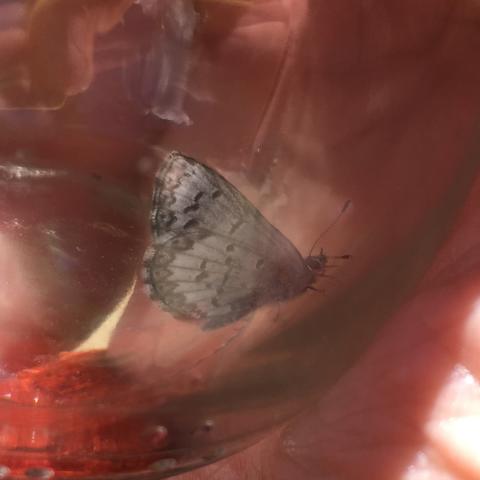Sighting 1209191
Northern Azure
Celastrina lucia
Observation date: June 08, 2019
Submitted by: A_baldini
Specimen type: Photograph
Observation notes: Weather: Mostly sunny and 67 degrees. Notes: Common in the lower elevations of Rocky Mountain National Park on June 8, but not nearly as common as Silvery Blues. Paul Opler told me that the azures east of the continental divide should be called Echo Azure, while the ones west of the divide should be called Northern Azure. I know azure taxonomy is complicated ever since the breakup of the Spring Azure, so I'm honestly not quite sure what to consider our resident azures at the moment.
Status: Resident
Verified by: mikefisher
Verified date: July 24, 2019
Coordinator notes: There is still controversy with regard to what names to use for the azure blues as you noted. My opinion (as well as that of James Scott) is to use the name lucia for our populations. The subspecies name "cinerea" is associated with the name C. echo but the populations east of the Continental Divide and Colorado have been more recently referred to subspecies "sidara" and not "cinerea" as they use to be. Specimens taken in the Wet Mountains (Custer County) were reported being closer to "C. echo cinerea" but I happened to have specimens from that reported locality and from the same date (I was in company with Ray Stanford that day) and mine don't look much different than ones farther north in the mountains up in the eastern Front Range. Now, to your specimen for the sighting - the margin on the hindwing is slightly darker so it approaches "form marginata." This is not too unusual. Sometimes you'll find some with small or larger blotches on the center of the hindwing discs. That is "form lucia." These forms are most common to the species C. lucia, not C. echo and lucia has a distribution in colder locations, hence the common name "Northern Azure." These forms are more commonly expressed higher into the mountains east of the Divide - above 9000 ft. or lower in a "cold" canyon locations that take a while to warm up in the spring. West of the Divide these forms are very commonly expressed, a majority with large dark disc spots often connected into blotches or with one large blotch in the center and these also often have a fully dark outer margin ("marginata" type). Thus, J. Scott named these subspecies "lumarco" because of the high percentage of the two forms (and combination of both) in western Colorado. Whew....hope that helps explain some of the situation but there is more yet to become known about this group. Mike
Checklist region(s): United States, Colorado, Larimer County



